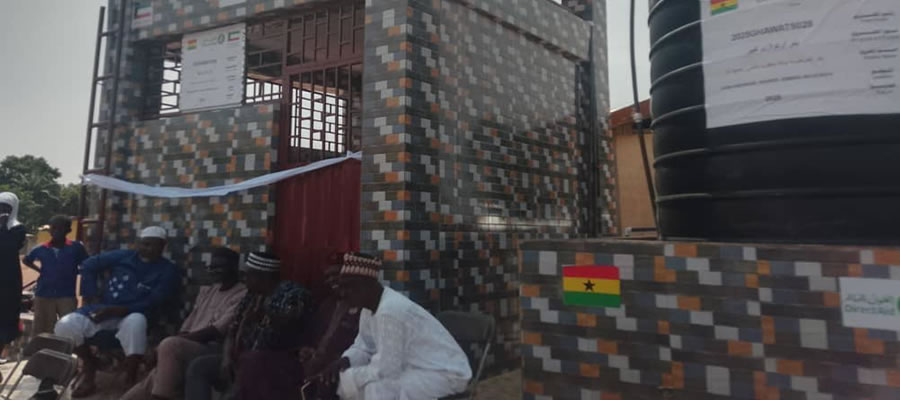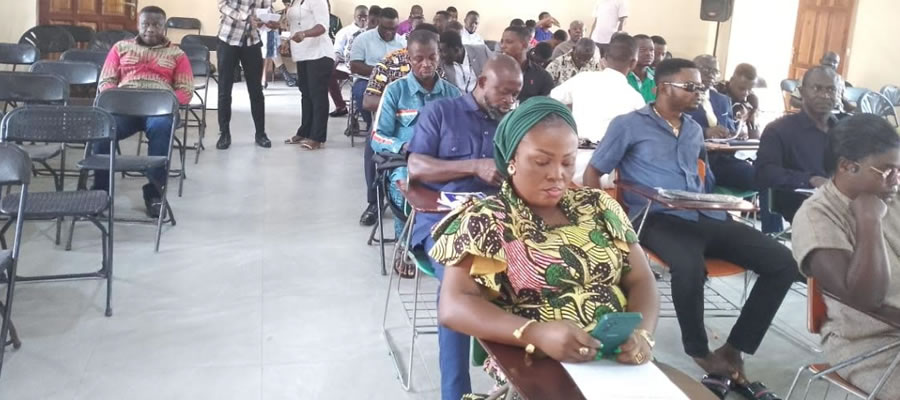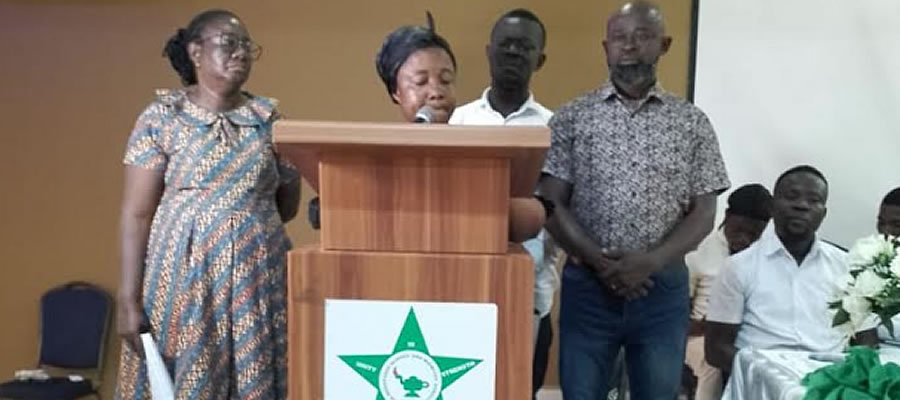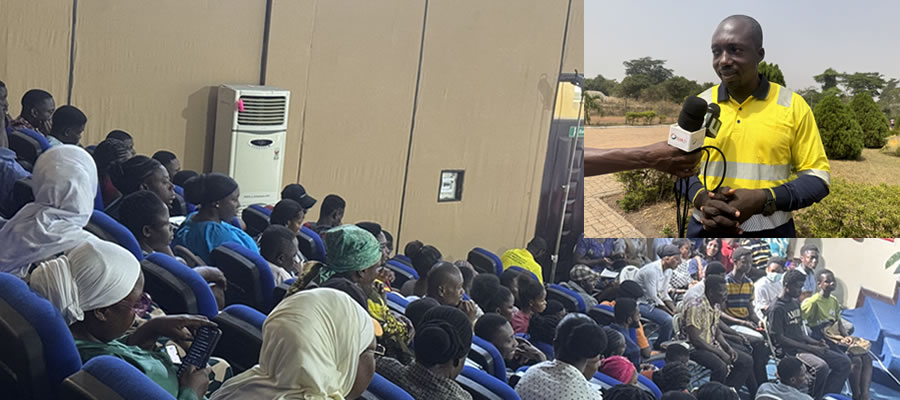

Source of Water Supply
The survey revealed that about 38.7%, 31%, 0.3% and 30% obtain their water source from pipe borne, well, river and boreholes respectively. It is only 0.3% who obtain their water source from river and which implies that the people in the District have good source of water hence the incidence of water diseases is very minimal.
Reason for choice of water source
About 59.3% of the people in the district choose their water sources because it is the only alternative available to them. Affordability, health, proximity are other reasons for their choice of water source and account for 15.3%, 24.3% and 1% respectively. This implies that more people are forced to choose a particular source because it is the only alternative available to them and would have chosen other source had they other alternatives.
Treatment of water
The survey showed that about 83% of people do not treat their water before drinking. This implies that only 17% of the people treat their water before drinking. This is as a result of the fact that most of the people have hygienic sources of water and therefore doesn’t see the need to treat the water before drinking. There is the need to educate the people on the various water treatment methods and the need to do so.
Reason for Non-Treatment
From the survey, ignorance is basically the reason why about 83% of the people do not treat their water before drinking. This is true because about 68% of the people are ignorant on the need to treat water before its consumption. About 4%, 5.1% and 2.6% do not treat their water because they think it is already purified, expensive or because of traditional belief respectively. This implies that there is the need to educate the people on the essence or importance of treating water before its consumption.
Treatment Methods
The survey revealed that about 37.5%, 18.8%, 37.5% and 6.3% of the people who treat their water source before drinking use boiling, sieving, chlorination and boiling and sieving
respectively
Problems with Usage of water source
According to the survey conducted, some problems associated with the use of the water sources include irregular supply of water, high cost, long distance, hard water, inadequacy, polluted and occasional break down constituting 33.9%, 22.6% 14.9%, 7.2% 13.6%, 2.3% and 5.4% respectively. It is realized that irregular supply of water sources especially pipe-borne and bore holes is the major problem related to usage of water in the district. There is therefore the need to ensure regular supply of water by increasing the water sources.
Knowledge of water related disease in community
The survey revealed that about 73.7% has no knowledge of water- related diseases whiles only 26.3% are aware or have knowledge of water related diseases in their communities This implies that awareness rate of water-related diseases is very minimal and therefore the need to educate the communities on water borne diseases.
Kind of Disease
Predominantly, typhoid is the commonest water related disease identified in the district. This represents about 58.2% of the incidence rate, followed by bilharzia which is also about 31.6% of the incidence of water borne diseases. The rest are guinea worm (2.5%), cholera (6.3%) and skin itching (1.3%). .
Liquid Waste Disposal Method
The main methods of disposing liquid waste in the District according to the survey include free range, disorganized drains and organised drains constituting 77.6%, 8.7% and 13.7% respectively. The disorganized drains serve as breeding grounds for mosquitoes thus causing high incidence of malaria in the District.
Type of Toilet facility used
The types of toilet facility used in the district include VIP, pit latrine, water closet, aqua privy and free range which constitutes 57.7%, 33%, 3.3%, 4.7% and 1.3% respectively. Most homes do not have toilet facilities thus resulting in pressure on the public toilets. The district assembly should enforce or encourage construction of toilet facilities in homes to reduce pressure on existing public ones.
Waiting Time (Toilet)
The pressure on public toilets in the District has resulted in long waiting time. The average waiting time per visit is 18.8 minutes. This causes delays and lateness to work thus leading to the lost man hours.
Cost per visit
The study revealed that the average cost per visit is 0210. Cost of toilet facility is not high as compared to the cities like Accra and Kumasi. The cost per visit is not a problem but rather the inadequacy of the facilities causing long waiting time and pressure on the existing facilities. This implies that more efforts must be directed towards the provision of household toilets and public toilets.
Problem associated with usage of toilet facility
Most of the people in the district according the survey patronise public toilets. The basic problems faced with the usage of the facility include inadequacy of facilities, unkempt public toilets, high cost, long distance, inadequate water to clean toilet facilities, bad smell and long waiting time constituting about 5.3%, 74%, 3.4%, 5.8%, 0.5%, 3.8% and 7.2% respectively. These problems adversely affects the health status of the people, therefore the need to put in measures to effectively address these problems.
Refuse Disposal Method
The main method of disposing refuse in the district is basically through the use of public refuse dump site. The baseline study showed that 95.7% use the public refuse dump site whilst about 1% use house to house collection method, 2.7% use the burning as a means of disposal, 0.3% use free range and 0.3% bury them. Measures must be put in place to ensure that the public dump site are well kept to prevent environmental pollution.
Frequency of Disposal
Public dump site is the commonest means of refuse disposal in the district and about 98% dispose off their waste daily. With this, one can just imagine the state of these sites with heaps of refuse. This implies that sanitation in terms of refuse disposal is poor and needs a lot of attention to remedy the situation. It is only 1.7% and 0.3% who dispose off refuse weekly and twice a week respectively.
Number of Disposal sites
About 41.7% of the communities have three disposal sites, whilst about 16% have four. About 11.7% have one disposal site, 15.7% have two and 15% have more than four. The number of disposal sites in the community is very important but not as important as they way and manner in which the site is maintained.
Nature of disposal site
About 77.9% of the disposal sites are open whilst communities which uses skip container, manhole valley/pit and free range are about 20.4%, 1.4% and 0.3% respectively. Since about 77.9% are open, it implies that if the disposal sites are not well organised, it can serve as breeding grounds of mosquitoes and also cause environmental pollution. This can affect the health status of the people which in the long run can result in low productively and eventually low income.
Distance to Disposal site
Distance to the various disposal sites are not much of a problem to the people in the district as about 57% of the people travel below 200m to dispose off refuse. However, about 25.7% cover a distance between 20-500m and 17.3% travel a distance of over 500m to dispose off refuse. The average distance to the disposal site is about 180.5 m.
Problems Associated with Usage of facility
About 95.7% of the disposal sites are public site and about 77.9% are open. The major problem associated with these sites is that they are unkempt thus exposing the inhabitants to health hazards. The problems associated with the use of the disposal sites are long distance, unkempt, irregular collection, proximity to houses, air pollution which constitute 24.3%, 64%,8.1%, 1.4% and 2.3% respectively. This implies that, there is a serious health problem associated with the use of the disposal facilities and need urgent attention to remedy the situation.
Access to Energy and its Management
Source of Energy for Cooking
The major source of energy for cooking in the district is fire wood which is used by about 48.5 percent of the population. Those who use electricity, gas and charcoal as their source of energy for cooking constitutes about 0.7 percent, 13.7 percent and 37.1 percent respectively. This indicates that the utilization of local resources like fuel wood has greatly influenced the source of energy for cooking. The average cost spent on energy for cooking per month is about 063,536 whilst the average distance covered to get the source of energy for cooking is about 2.12 km.
Source of Energy for Lighting
Electricity is the major source of energy for lighting in the District. Its usage constitutes about 69.2 percent of the population. This implies that majority of the people in the district have access to electricity thus contributing significantly to the improvement in the standard of living of the people. The usage of kerosene and candles represent 30.4 percent and 0.3 percent of the population respectively. The average cost per month on the source of energy for lighting in about 065,233. The high cost of the energy for lighting coupled with poor quality of services in the District has affected customer satisfaction negatively.
Reason of choice of energy source for cooking
People have their own reasons for choosing a particular energy source for cooking. From the survey conducted, about 56.5% choose their energy source for cooking because it is affordable, 74% choose theirs because of proximately, 29.4% choose theirs because it is the only alternative available to them and 6.7% choose the source because it is convenient to them. This implies it is mainly because of affordability that people choose their energy source for cooking.
Reasons for choice of energy source for lighting
The choice of energy source for lighting is also based on several reasons. From the study, 16.3% choose their source because of proximity, 57.3% because it is the only alternative available to them and 3.7% choose their due to how convenient it is to them. This implies that majority of people choose a particular source due to the fact that it is the only alternative available to them.
Problems with the use of energy source for lighting
There are several problems associated with the choice of a particular source of energy for lighting. For instance, about 54.4% face the problem of high cost of their energy source, 44.5% face the problem of irregular supply, whilst only 1.1% claim to encounter the problem of long distance. It implies that the problem faced by majority of the people in the district with regards to their energy source for lighting is high cost.
Problems with the use of energy source for cooking
The energy source for cooking is also confronted with some problems. This is because 33.5% face the problem of high cost, 32% irregular supply and 34.5% face the problem of long distance. This implies that majority of the people face the problem of long distance to access energy for cooking. This is because majority of the people use firewood which is obtained from their farms, which are some distance away from their homes.
Date Created : 11/27/2017 3:18:59 AM













 facebook
facebook
 twitter
twitter
 Youtube
Youtube
 +233 593 831 280
+233 593 831 280 0800 430 430
0800 430 430 GPS: GE-231-4383
GPS: GE-231-4383 info@ghanadistricts.com
info@ghanadistricts.com Box GP1044, Accra, Ghana
Box GP1044, Accra, Ghana